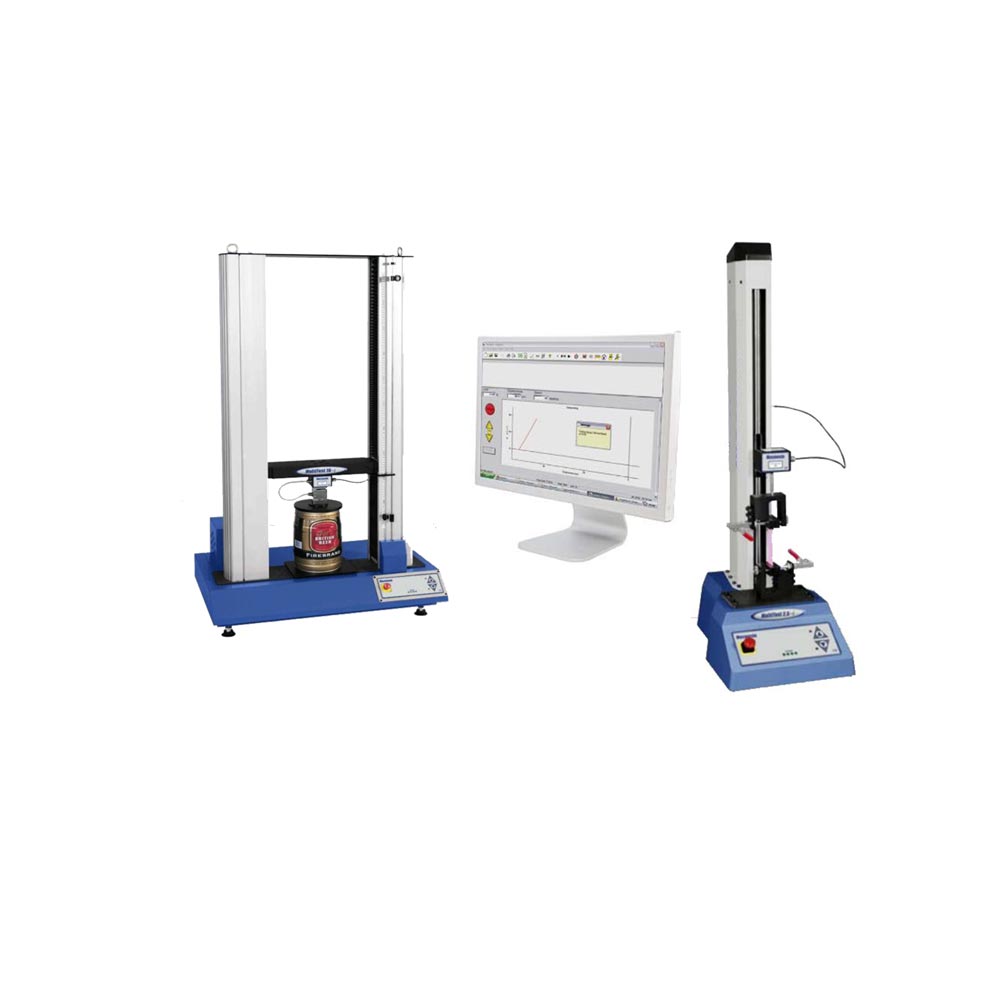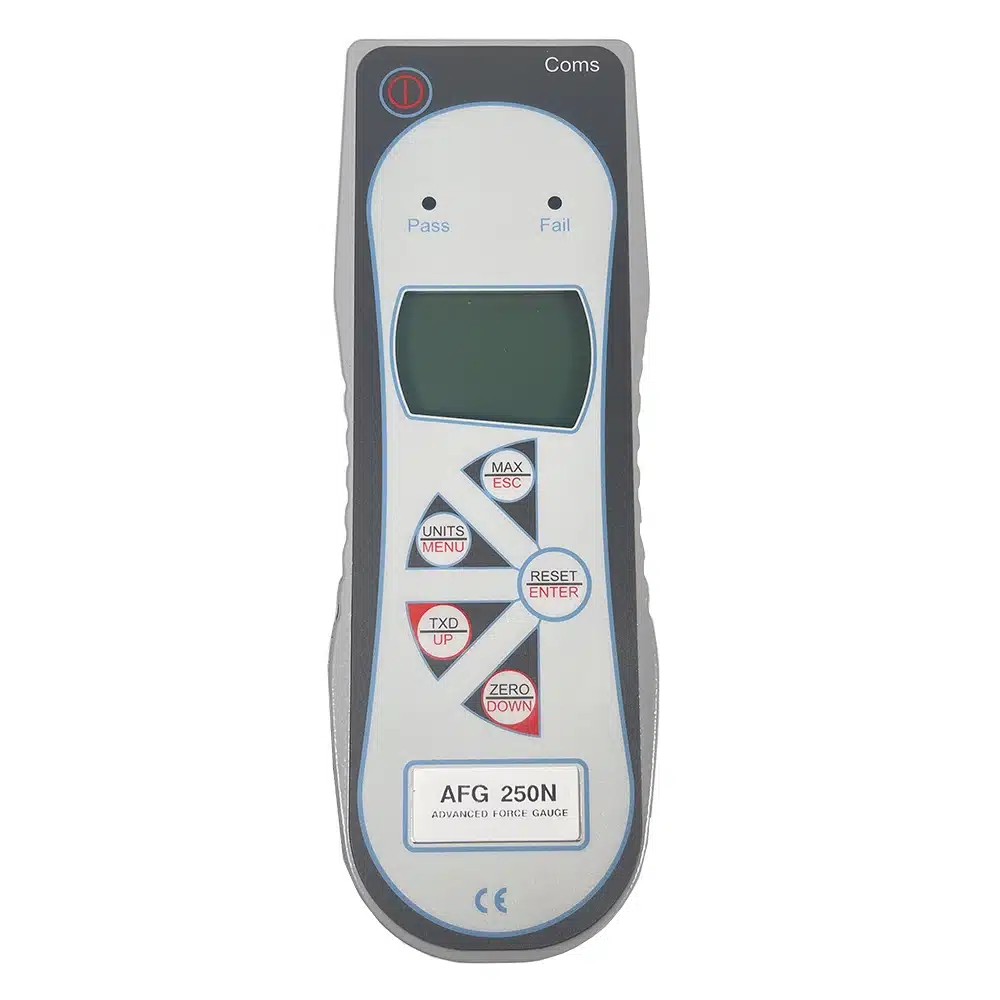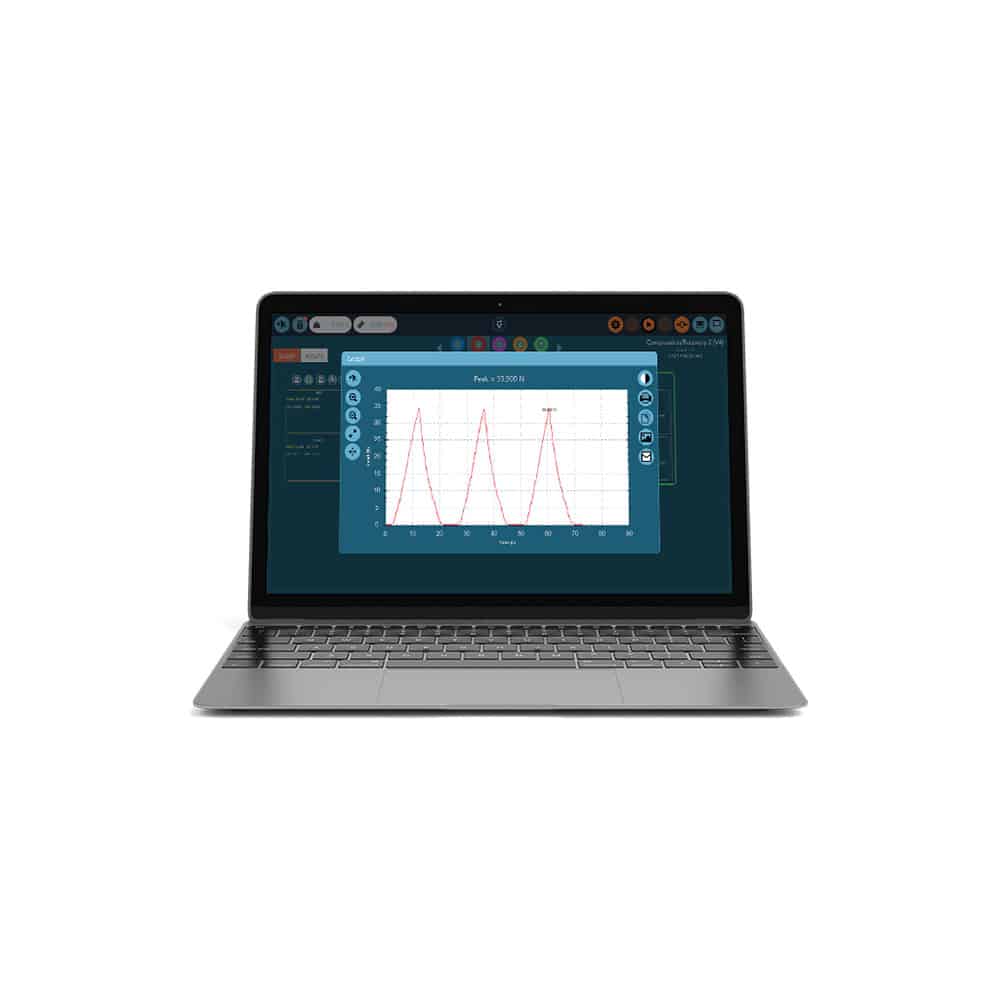Compression tensile bench
Simplicity and Performance
Our compression tensile testers ensure accurate and reliable force measurement to meet the most stringent testing requirements.
Discover our range of traction/compression benches
Business model

The MDD Stand is an easy-to-use, hand-operated precision stand that allows you to regularly move a dynamometer when hand-holding is no longer sufficient.
The rotation of the crank at the top of the stand is the element that ensures even traction and compression.
Advanced model

Mecmesin Multitest-DV Traction Bench
The Multitest – DV is a versatile, compact motorized test stand offering excellent value for money. It allows to realize precise tensile / compression tests, in particular thanks to its sophisticated electronic components and its egonomic control plate.
Premium model

Mecmesin Multitest-I Compression Test Stand
The Multitest-i tensile-compression test rig, controlled by the powerful Emperor software, is a benchmark in the field of computer-controlled tensile and compression test rigs.

Control your tensile and compression tests with unrivalled precision.
The AFG dynamometer is not just an accessory, it’s an indispensable addition to your test bench.
By combining the robustness and stability of a manual or motorized bench with the precision of the AFG force gauge, you get a complete, reliable and high-performance measurement system.
Thanks to its many features – clear display, results storage, real-time measurements – the AFG lets you get the most out of your tensile or compression test bench.
Whether for quality control, research or development, this combination guarantees precise, reproducible and professional results.
Options and accessories
All benches

software vector pro
Thanks to its user-friendly graphical interface, VectorPro makes it easy to schedule tests, monitor them in real time, export results and generate comprehensive reports.
All benches

Software Empror
Its strength lies in its wealth of functions: high-resolution data acquisition, real-time graphical visualization, user management, automatic calculations, customizable report generation and complete traceability.
Contact us
Need advice or a customized quote for your test bench?
At ACRN, we know that every mechanical testing requirement is unique. That’s why we offer a complete range of manual and motorized tensile and compression benches, backed up by customized solutions to guarantee precision, reliability and performance.
✅ Why choose our test benches?
-
Optimum precision for your tensile, compression or cycle tests.
-
Customizable configurations to suit your industrial or laboratory applications.
-
Technical support from mechanical control specialists.
Fill in the form opposite to :
➡️ Ask your questions
➡️ Request a customized quote
➡️ Benefit from expert advice
📞 An urgent request? Contact us directly at 02 32 80 81 40 or by mail to
contact@acrn.fr
ACRN, your partner for customized test solutions.
Frequently asked questions about the tension-compression bench
What is a compression tensile tester ?
A tension-compression bench is a testing device used to measure the strength of materials or assemblies under tensile (stretching) and compressive (crushing) forces.
What is the purpose of a compression trainer?
It is used to test the strength, elasticity and behavior of various materials (plastics, metals, composites, etc.) or mechanical parts when subjected to mechanical stress.
What types of materials can be tested on a tensile-compression bench?
Compression tensile testers can test a wide range of materials: plastics, metals, textiles, rubber, composites, etc.
What's the difference between a tensile test and a compression test?
Tensile testing involves stretching a material until it breaks, while compression testing assesses its strength when compressed.
How does a compression trainer work?
It uses force and displacement sensors. The material is clamped between two jaws, then subjected to increasing force until it reaches its mechanical limits.
What are the advantages of a compression trainer?
-
Precise force and strain measurements
-
Comprehensive analysis of material behavior
-
Helping to develop new products or improve quality
What standards can be met with a compression test bench?
The benches can comply with international standards such as ISO, ASTM, DIN, etc., depending on the tests performed.
